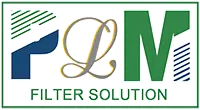Aug . 09, 2024 03:40 Back to list
High-Performance PM2.5 Filter Paper Solutions for Enhanced Air Quality Protection and Pollution Control
Understanding PM 2.5 Filter Paper Products
In an era where air quality is becoming an increasingly pressing concern, the importance of PM 2.5 filter paper products cannot be overstated. PM 2.5 refers to particulate matter that is less than 2.5 micrometers in diameter, which is about 30 times smaller than the width of a human hair. These microscopic particles can originate from various sources, including vehicle emissions, industrial discharges, and natural phenomena like wildfires. Due to their small size, PM 2.5 particles can penetrate deep into the lungs and even enter the bloodstream, leading to serious health issues such as respiratory diseases, cardiovascular problems, and other chronic conditions.
To combat this public health threat, the use of PM 2.5 filter paper products has gained traction across various sectors, including air filtration systems, laboratory settings, and even personal protective equipment like masks. These products are designed to effectively capture PM 2.5 particles, thereby improving air quality and safeguarding human health.
Composition and Functionality of PM 2.5 Filter Paper
PM 2.5 filter paper is typically made from a combination of cellulose, synthetic fibers, and other filtration materials that enhance its ability to trap fine particulates. The efficiency of these filters is often assessed in terms of their filtration efficiency ratings, which indicate the percentage of particles that can be captured. High-quality PM 2.5 filter paper products can achieve efficiencies greater than 99%, making them suitable for various applications where air quality is compromised.
The functionality of these filters also extends beyond mere filtration. Many PM 2.5 filter papers are treated with chemicals or coatings that enhance their performance. Some products utilize electrostatic charging to attract and capture more particles, while others incorporate anti-bacterial agents to prevent microbial growth, thereby ensuring the filter's longevity and performance.
Applications in Various Industries
pm 2.5 filter paper products

1. Air Purification Systems One of the most common applications of PM 2.5 filter paper is in air purification systems. These systems are widely used in homes, offices, and industrial settings to provide clean air by removing harmful particulate matter. The integration of PM 2.5 filters ensures that a significant portion of the harmful particles is eliminated, contributing to better indoor air quality.
2. Laboratory Research In scientific research, particularly in environmental studies, PM 2.5 filter paper is used for sampling air quality. Researchers collect air samples in special containers lined with these filters to analyze the concentrations of particulate matter and study their sources and effects on health and the environment.
3. Personal Protective Equipment In response to increased awareness of air quality issues, various manufacturers have developed masks featuring PM 2.5 filter paper. These masks are designed to be worn by individuals, particularly in polluted urban areas, to reduce the inhalation of harmful particles. As such, these products have become an essential item for many, especially during smog events or in regions with high pollution levels.
Challenges and Future Prospects
Despite the effectiveness of PM 2.5 filter paper products, challenges remain. The disposal of used filters can pose environmental concerns, and ongoing research is needed to develop sustainable filter materials. Furthermore, continuous developments in technology promise to enhance the efficiency of these products, potentially leading to even better air quality solutions.
In conclusion, PM 2.5 filter paper products play a critical role in safeguarding public health by improving air quality and reducing exposure to harmful particulate matter. As urbanization and industrial activities continue to rise, the demand for effective air filtration solutions will only increase, making these filter products indispensable for a healthier future. Emphasizing innovation and sustainability will be key to advancing this essential technology and ensuring clean air for generations to come.
-
Cheap PLJY109-500 Full-Auto HDAF Expanded Mesh Spiral Coiling Machine - High Efficiency & Quality Manufacturer
NewsJul.08,2025
-
Best PLHJ-6 Full-Auto Eco Filter Rotary Heat Plating Machine - High Efficiency & Eco-Friendly Solution
NewsJul.08,2025
-
High-Efficiency Paper Pleating Machine for Filters Trusted Filter Paper Pleating Machine Company
NewsJul.07,2025
-
High-Performance Oil Filter for Cadillac ATS – Reliable Engine Protection Solutions
NewsJul.07,2025
-
High Quality PU Glue for Filters – Reliable Filter Glue Supplier & Exporter Get PU Glue Quotes Now
NewsJul.07,2025
-
China PLJL-4 Seal Leakage Tester for Spin-On Filter - High-Precision Multi-Station Testing Solutions
NewsJul.06,2025
